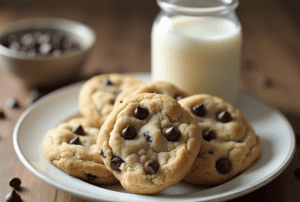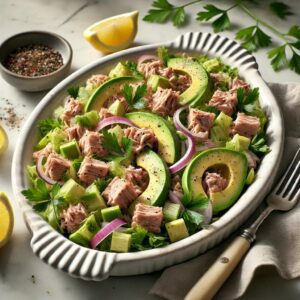

The Peanut Butter Problem: What Happened to This Simple, Healthy Food?


Arya Soleil
Peanut butter used to be one of the simplest and healthiest foods you could eat—just peanuts and salt. But today, most commercial peanut butter brands are filled with sugar, hydrogenated oils, preservatives, and artificial additives, turning this once-nutritious spread into a highly processed food that harms your health.
So, what changed? And more importantly, how can you choose the healthiest peanut butter for you and your family?
Let’s dive into the shocking differences between old-fashioned peanut butter and modern processed peanut butter, the dangers of the extra ingredients added to it today, and how to find (or make) a healthier alternative.
What’s Really Inside Your Peanut Butter?
Peanut Butter “Then” (The Original Recipe)
🥜 Ingredients: Peanuts, Salt.
That’s it. Pure, simple, and packed with natural nutrients. Traditional peanut butter was an excellent source of healthy fats, protein, fiber, and essential vitamins and minerals without any unnecessary additives.
Peanut Butter “Now” (Modern Processed Brands)
🚨 Ingredients: Peanuts, peanut oil, sugar, high fructose corn syrup, canola or hydrogenated vegetable oil, mono and diglycerides, preservatives.
That’s a long list of unnecessary and harmful additives. Let’s break them down:
❌ Added Sugar & High Fructose Corn Syrup (HFCS) – Increases inflammation, blood sugar spikes, and risk of diabetes.
❌ Hydrogenated Oils & Canola Oil – Contain trans fats that contribute to heart disease and obesity.
❌ Mono & Diglycerides – Often made from genetically modified soy or canola oil, containing unhealthy fats.
❌ Preservatives & Artificial Ingredients – Increase shelf life but harm gut health and metabolism.
The problem? These extra ingredients turn peanut butter from a nutrient-dense food into an ultra-processed, inflammatory product that does more harm than good.
The Health Risks of Processed Peanut Butter
If you’re eating peanut butter that contains hydrogenated oils, added sugars, and artificial preservatives, here’s what you need to know:
Increases Inflammation in the Body
🚨 Trans fats from hydrogenated oils trigger chronic inflammation, leading to diseases like heart disease, arthritis, and diabetes.
🚨 High fructose corn syrup contributes to liver damage, insulin resistance, and obesity.
Raises Blood Sugar and Increases Risk of Diabetes
🚨 Many brands add sugar and HFCS, making peanut butter more like candy than a health food.
🚨 Spiking blood sugar increases cravings, weight gain, and metabolic dysfunction.
Contributes to Weight Gain & Obesity
🚨 Processed peanut butter contains hidden sugars and unhealthy fats that promote fat storage.
🚨 Instead of keeping you full, the added sugars lead to overeating and cravings.
Harms Heart Health
🚨 Hydrogenated oils and trans fats raise bad cholesterol (LDL) and lower good cholesterol (HDL).
🚨 Leads to artery clogging and increased risk of heart attacks.
Contains Harmful Additives & Preservatives
🚨 Emulsifiers and preservatives harm gut bacteria, leading to digestive issues and bloating.
🚨 Canola and vegetable oils are highly processed and often genetically modified (GMO).
How to Choose the Healthiest Peanut Butter
If you love peanut butter but want to avoid the health risks of processed brands, here’s what to look for:
✅ Read the Ingredients List
The best peanut butter should only contain two ingredients:
✔️ Peanuts
✔️ Salt (optional)
If you see added sugars, oils, or preservatives, put it back on the shelf!
✅ Choose Organic & Non-GMO
✔️ Conventional peanuts are heavily sprayed with pesticides, so opt for organic peanut butter when possible.
✔️ Avoid GMOs by choosing a certified non-GMO brand.
✅ Go for Glass Jars Instead of Plastic
✔️ Many processed peanut butters come in plastic containers, which can leach BPA and other harmful chemicals into the food.
✔️ Glass jars are safer and better for the environment.
✅ Look for Natural Oils Instead of Hydrogenated Oils
✔️ If there’s oil separation in the jar, that’s a good sign! It means there are no hydrogenated or processed oils.
✔️ Simply stir before using, and store it upside down to prevent separation.
The Best Peanut Butter Alternatives
If you want a healthy and delicious peanut butter alternative, here are some great options:
Make Your Own Peanut Butter 🥜
It’s easier than you think! All you need is:
✅ 2 cups organic peanuts
✅ ½ teaspoon sea salt (optional)
👉 Blend in a food processor for 5-10 minutes until creamy. That’s it—no sugar, no oils, no preservatives!
Try Other Nut Butters 🌰
If you want variety, try:
✔️ Almond Butter – Higher in vitamin E and magnesium.
✔️ Cashew Butter – Naturally creamy and slightly sweet.
✔️ Walnut Butter – Loaded with heart-healthy omega-3s.
Consider Seed Butters 🌻
If you have a peanut allergy or want an alternative, try:
✔️ Sunflower Seed Butter – Rich in vitamin E and zinc.
✔️ Tahini (Sesame Seed Butter) – Great for digestion and full of healthy fats.
Final Thoughts: Choose Pure, Natural Peanut Butter Over Processed Brands
Peanut butter should be a simple, nutritious food, but modern brands have turned it into an ultra-processed, unhealthy product filled with additives.
✅ Old-fashioned peanut butter = Peanuts + Salt (Healthy!)
❌ Modern processed peanut butter = Added sugar, hydrogenated oils, preservatives (Unhealthy!)
The good news? You don’t have to give up peanut butter—you just have to choose the right kind.
Stick to natural, organic peanut butter with minimal ingredients, or make your own at home! Your body (and taste buds) will thank you.
Recommended Reads

- March 22, 2025
Anti-Inflammatory Breakfasts: Easy Recipes to Start Your Day Right
Home News Healthy Habits & Lifestyle Health Conditions &...


- March 22, 2025
Questioning the FDA: A Deeper Look at the Food and Drug Administration’s Role
Home News Healthy Habits & Lifestyle Health Conditions &...


- March 22, 2025
Make ‘Raw Milk’ Just ‘Milk’ Again: A Closer Look at the Raw Milk Debate
Home News Healthy Habits & Lifestyle Health Conditions &...


- March 22, 2025
The Power of Sweet Potatoes: A Superfood for Eyes, Skin, and Beyond
Home News Healthy Habits & Lifestyle Health Conditions &...


- March 22, 2025
Sugar-Free: A Code Word for “We’ve Replaced It with Something Worse for You”
Home News Healthy Habits & Lifestyle Health Conditions &...


- March 22, 2025
The Evolution of Food: How Modern Diets Are Fueling Chronic Disease
Home News Healthy Habits & Lifestyle Health Conditions &...

The Peanut Butter Problem: What Happened to This Simple, Healthy Food?

Peanut butter used to be one of the simplest and healthiest foods you could eat—just peanuts and salt. But today, most commercial peanut butter brands are filled with sugar, hydrogenated oils, preservatives, and artificial additives, turning this once-nutritious spread into a highly processed food that harms your health.
So, what changed? And more importantly, how can you choose the healthiest peanut butter for you and your family?
Let’s dive into the shocking differences between old-fashioned peanut butter and modern processed peanut butter, the dangers of the extra ingredients added to it today, and how to find (or make) a healthier alternative.
What’s Really Inside Your Peanut Butter?
Peanut Butter “Then” (The Original Recipe)
🥜 Ingredients: Peanuts, Salt.
That’s it. Pure, simple, and packed with natural nutrients. Traditional peanut butter was an excellent source of healthy fats, protein, fiber, and essential vitamins and minerals without any unnecessary additives.
Peanut Butter “Now” (Modern Processed Brands)
🚨 Ingredients: Peanuts, peanut oil, sugar, high fructose corn syrup, canola or hydrogenated vegetable oil, mono and diglycerides, preservatives.
That’s a long list of unnecessary and harmful additives. Let’s break them down:
❌ Added Sugar & High Fructose Corn Syrup (HFCS) – Increases inflammation, blood sugar spikes, and risk of diabetes.
❌ Hydrogenated Oils & Canola Oil – Contain trans fats that contribute to heart disease and obesity.
❌ Mono & Diglycerides – Often made from genetically modified soy or canola oil, containing unhealthy fats.
❌ Preservatives & Artificial Ingredients – Increase shelf life but harm gut health and metabolism.
The problem? These extra ingredients turn peanut butter from a nutrient-dense food into an ultra-processed, inflammatory product that does more harm than good.
The Health Risks of Processed Peanut Butter
If you’re eating peanut butter that contains hydrogenated oils, added sugars, and artificial preservatives, here’s what you need to know:
Increases Inflammation in the Body
🚨 Trans fats from hydrogenated oils trigger chronic inflammation, leading to diseases like heart disease, arthritis, and diabetes.
🚨 High fructose corn syrup contributes to liver damage, insulin resistance, and obesity.
Raises Blood Sugar and Increases Risk of Diabetes
🚨 Many brands add sugar and HFCS, making peanut butter more like candy than a health food.
🚨 Spiking blood sugar increases cravings, weight gain, and metabolic dysfunction.
Contributes to Weight Gain & Obesity
🚨 Processed peanut butter contains hidden sugars and unhealthy fats that promote fat storage.
🚨 Instead of keeping you full, the added sugars lead to overeating and cravings.
Harms Heart Health
🚨 Hydrogenated oils and trans fats raise bad cholesterol (LDL) and lower good cholesterol (HDL).
🚨 Leads to artery clogging and increased risk of heart attacks.
Contains Harmful Additives & Preservatives
🚨 Emulsifiers and preservatives harm gut bacteria, leading to digestive issues and bloating.
🚨 Canola and vegetable oils are highly processed and often genetically modified (GMO).
How to Choose the Healthiest Peanut Butter
If you love peanut butter but want to avoid the health risks of processed brands, here’s what to look for:
✅ Read the Ingredients List
The best peanut butter should only contain two ingredients:
✔️ Peanuts
✔️ Salt (optional)
If you see added sugars, oils, or preservatives, put it back on the shelf!
✅ Choose Organic & Non-GMO
✔️ Conventional peanuts are heavily sprayed with pesticides, so opt for organic peanut butter when possible.
✔️ Avoid GMOs by choosing a certified non-GMO brand.
✅ Go for Glass Jars Instead of Plastic
✔️ Many processed peanut butters come in plastic containers, which can leach BPA and other harmful chemicals into the food.
✔️ Glass jars are safer and better for the environment.
✅ Look for Natural Oils Instead of Hydrogenated Oils
✔️ If there’s oil separation in the jar, that’s a good sign! It means there are no hydrogenated or processed oils.
✔️ Simply stir before using, and store it upside down to prevent separation.
The Best Peanut Butter Alternatives
If you want a healthy and delicious peanut butter alternative, here are some great options:
Make Your Own Peanut Butter 🥜
It’s easier than you think! All you need is:
✅ 2 cups organic peanuts
✅ ½ teaspoon sea salt (optional)
👉 Blend in a food processor for 5-10 minutes until creamy. That’s it—no sugar, no oils, no preservatives!
Try Other Nut Butters 🌰
If you want variety, try:
✔️ Almond Butter – Higher in vitamin E and magnesium.
✔️ Cashew Butter – Naturally creamy and slightly sweet.
✔️ Walnut Butter – Loaded with heart-healthy omega-3s.
Consider Seed Butters 🌻
If you have a peanut allergy or want an alternative, try:
✔️ Sunflower Seed Butter – Rich in vitamin E and zinc.
✔️ Tahini (Sesame Seed Butter) – Great for digestion and full of healthy fats.
Final Thoughts: Choose Pure, Natural Peanut Butter Over Processed Brands
Peanut butter should be a simple, nutritious food, but modern brands have turned it into an ultra-processed, unhealthy product filled with additives.
✅ Old-fashioned peanut butter = Peanuts + Salt (Healthy!)
❌ Modern processed peanut butter = Added sugar, hydrogenated oils, preservatives (Unhealthy!)
The good news? You don’t have to give up peanut butter—you just have to choose the right kind.
Stick to natural, organic peanut butter with minimal ingredients, or make your own at home! Your body (and taste buds) will thank you.
Recommended Reads

- March 22, 2025
Anti-Inflammatory Breakfasts: Easy Recipes to Start Your Day Right
Home News Healthy Habits & Lifestyle Health Conditions &...


- March 22, 2025
Questioning the FDA: A Deeper Look at the Food and Drug Administration’s Role
Home News Healthy Habits & Lifestyle Health Conditions &...


- March 22, 2025
Make ‘Raw Milk’ Just ‘Milk’ Again: A Closer Look at the Raw Milk Debate
Home News Healthy Habits & Lifestyle Health Conditions &...


- March 22, 2025
The Power of Sweet Potatoes: A Superfood for Eyes, Skin, and Beyond
Home News Healthy Habits & Lifestyle Health Conditions &...


- March 22, 2025
Sugar-Free: A Code Word for “We’ve Replaced It with Something Worse for You”
Home News Healthy Habits & Lifestyle Health Conditions &...


- March 22, 2025
The Evolution of Food: How Modern Diets Are Fueling Chronic Disease
Home News Healthy Habits & Lifestyle Health Conditions &...



